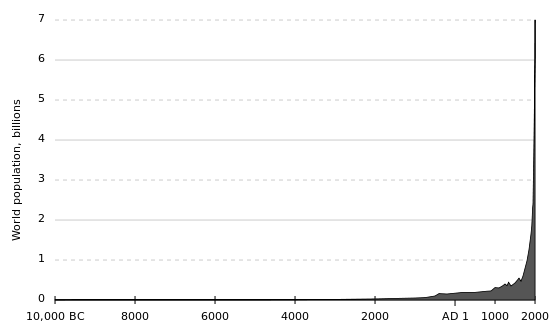
A simplified way to understand the effect of population on our use of resources comes from addressing the underlying effects of the two factors in the Overall Impact equation:
Overall Impact = Population x Consumption
As shown in Figure 2.2, the global human population stayed at levels that placed small demands on natural resources. Furthermore, the type of resources that were used for most of human history had spatially-limited, long-term impact on the health of the environment and ecosystems.
Biological reproduction is inherently multiplicative. When this multiplicative effect was no longer balanced by large mortality rates, the global population underwent runaway growth. This brings us back to a question we discussed in the previous module: how many people can Earth support?
As we discussed before, the answer to this question has remained elusive, as the global population has grown past many estimates of our planet's carrying capacity. There are many reasons why many of these apparent doomsday predictions have not been accurate. The carrying capacity depends on quality of life, on emerging technologies, and on the great capability that human populations have for adaptation. The observation that the average person has a better quality of life, despite the pressures that population growth have place on natural systems, has led us to be overly confident and follow a path of economic development called Resource Optimism.
